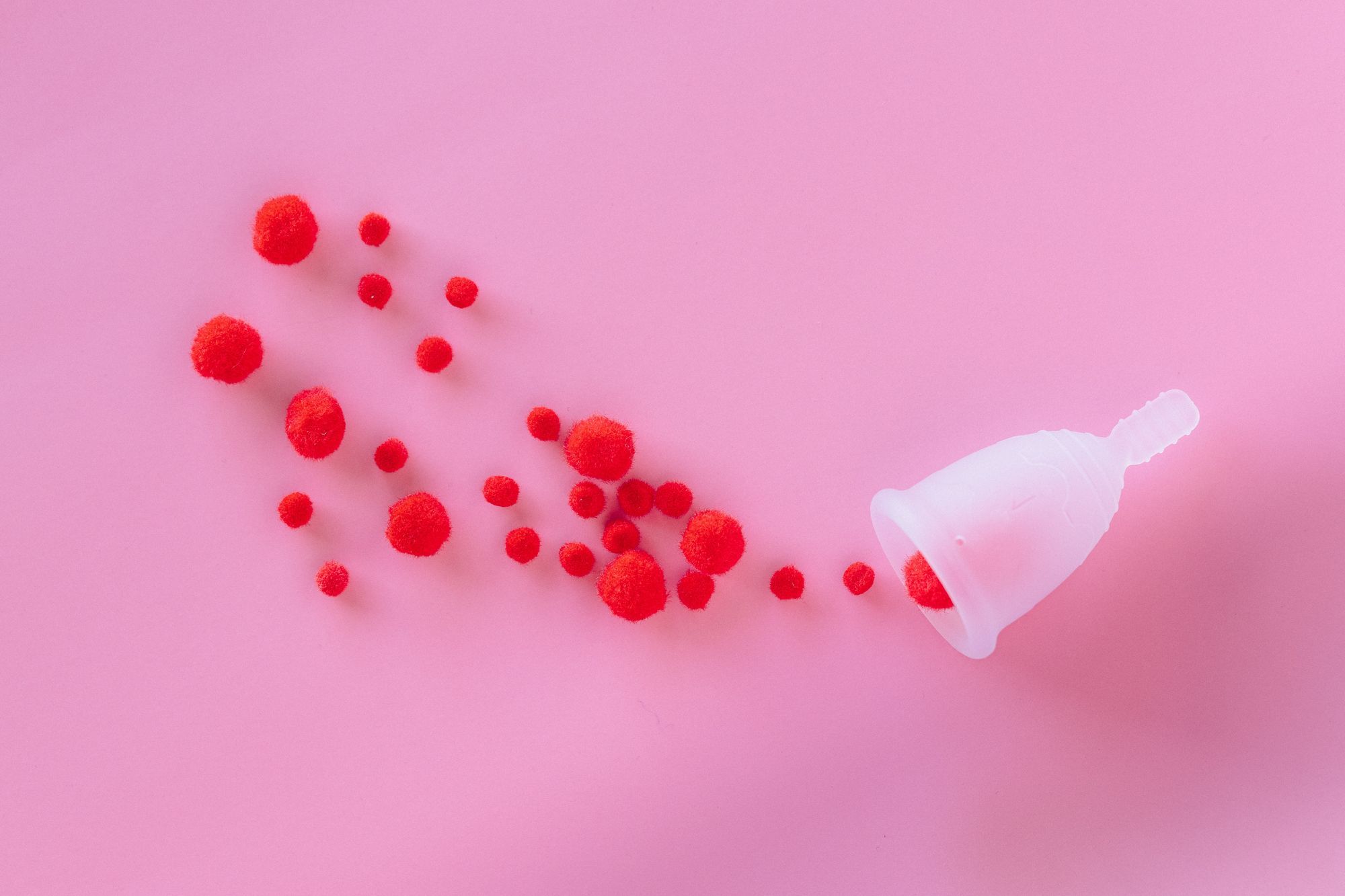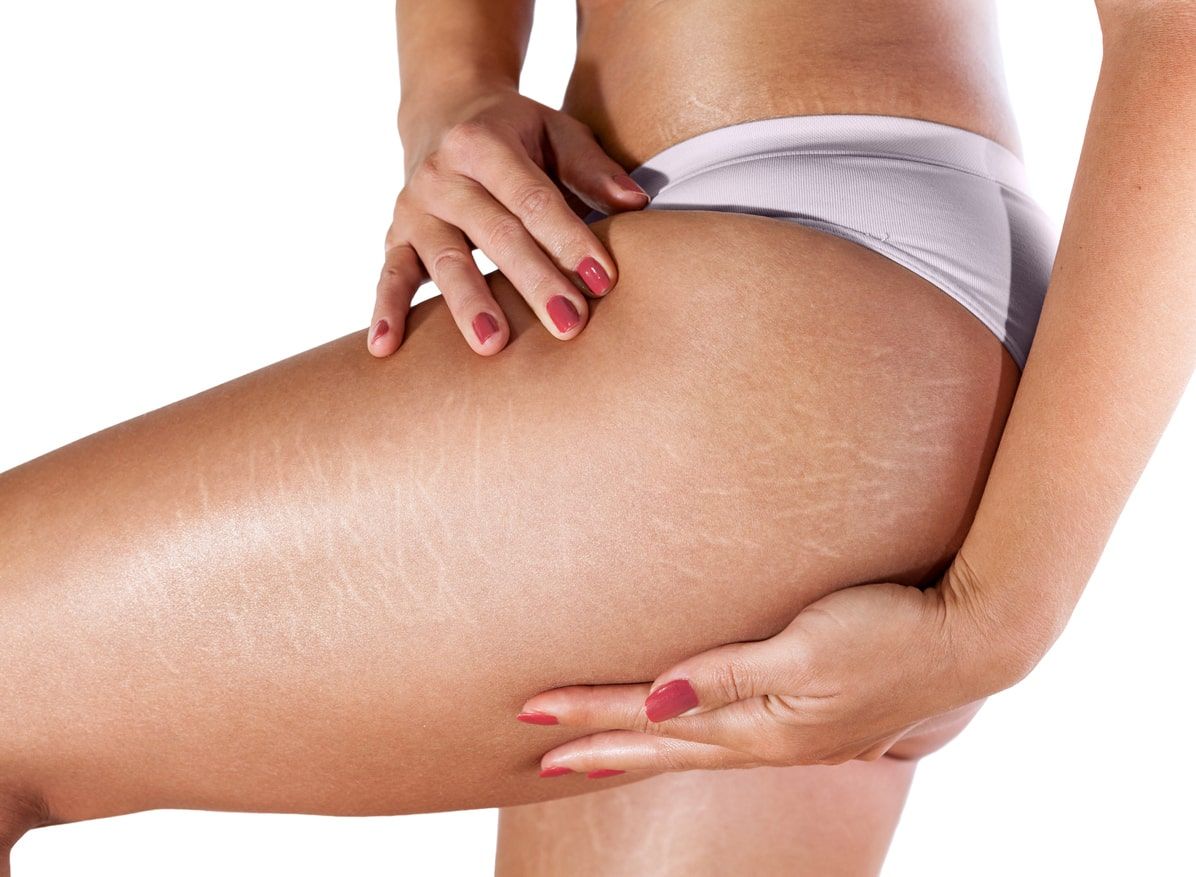The Complete Beginner's Guide to Using a Menstrual Cup

What is a menstrual cup? | How do you know what size menstrual cup to use? | How to find the right cup size | How to insert a menstrual cup | When to take your menstrual cup out | How to take your menstrual cup out | How to clean a menstrual cup | Menstrual cup advantages | Menstrual cup disadvantages | In Conclusion
If you are curious about using menstrual cups, then read this article. It covers all the basics, like how to insert and remove them, as well as how to clean them.
You'll also find out why so many people are choosing to use menstrual cups instead of traditional pads or tampons.
What is a menstrual cup?
A menstrual cup is a feminine hygiene product that's worn inside the body. It's a tiny, flexible funnel-shaped rubber or silicone cup that you insert into your vagina to collect and contain period blood.
Because menstrual cups can hold more blood than other methods, many women choose them as an environmentally friendly option to tampons. A cup may be worn for up to 12 hours depending on your flow.
How do you know what size menstrual cup to use?
If you want to use a menstrual cup, you'll need to figure out what size you require. Most menstrual cup manufacturers provide small and large sizes.
Women who haven't given birth vaginally are typically advised to use a smaller menstrual cup.
Larger cup sizes are frequently suggested for women who are over 30 years old, have delivered vaginally, or menstruate heavily.
How to find the right cup size
How to insert a menstrual cup
If you can put a tampon in, inserting a menstrual cup should not be difficult for you.
When you first use a menstrual cup, it might feel strange. However, “greasing” your cup may make the process easier.
Water or a water-based lubricant should be used to lubricate the rim before inserting your cup. It's much simpler to put a wet menstrual cup in.
To insert a menstrual cup, follow these 5 steps:
Step 1: Clean
Before inserting a menstrual cup, make sure the cup and your hands are clean. If your fingernails are long and sharp, you might have difficulty inserting the cup if you don't cut them shorter first.
Step 2: Fold
Fold the menstrual cup over so that its large opening is reduced for entry.
Step 3: Insert
To insert your menstrual cup, find a comfortable position. You can sit on the toilet, stand, or squat. With one hand, hold the folded menstrual cup.
With your other hand, part your labia and locate your vaginal opening. Gently insert the menstrual cup into your vagina in the direction of your tailbone.
Step 4: Open
When you can't hold the cup anymore, let it pop open inside your vagina. Keep pushing it from the bottom until the stem isn't sticking out of your vagina. Don't push it so deep that you can't grab the stem.
Step 5: Rotate
To make sure your menstrual cup is sealed and secure, twist it by grabbing the base (not the stem).
You should not feel your menstrual cup if you inserted it correctly. You should also be able to move, jump, sit, stand, and do other everyday activities without your cup falling out. If you are having trouble putting in your cup, speak with your doctor.
When to take your menstrual cup out
You can wear a menstrual cup for up to 12 hours, depending on how heavy your flow is. This means you can use it overnight without having to worry.
You should always remove your menstrual cup by the 12-hour mark. If it becomes full before then, you'll have to empty it ahead of schedule so you don't have any leaks.
How to take your menstrual cup out
Simply follow these 5 steps to remove a menstrual cup:
Step 1: Warm soapy water should be used to clean your hands.
Step 2: Find a position that is as close to natural as possible, such as sitting on the toilet or squatting. As if you were having a bowel movement, press your abdominal muscles in order to help your menstrual cup sink slightly further down inside your vagina and make it simpler to grasp.
Step 3: To remove your menstrual cup, pinch the base of the cup to break the seal. Gently pull the stem of the cup down until you can reach the base. Pinch the base to break the suction and pull the cup out.
Step 4: Some people just pull the cup straight out by the stem. This can get messy and uncomfortable. To avoid this, pull from the pinched base.
This will give you more control over the cup (less spillage on your hands) and also keep the rim of the cup in a slightly folded position, making it more comfortable to remove.
Step 5: If you want to see how much menstrual blood you've collected, look at your cup. Cups often have measurements on the sides of the cups to tell you how much volume is inside. When you're done, just tip your menstrual blood into the toilet.
How to clean a menstrual cup
Before putting a reusable menstrual cup back into your vagina, it should be washed and wiped clean. Your cup should be emptied at least twice a day.
Menstrual cups are long-term and sturdy, lasting anywhere from six months to ten years with proper care. Disposable cups should be disposed of after use.
There are also menstrual cleaning products available, such as menstrual cup sterilizers and steamers.
Menstrual cup advantages
Menstrual cups are an excellent alternative to other sanitary products on the market, and many women choose them because:
- Menstrual cups are budget-friendly. You only have to buy them once, and they cost less than tampons or pads in the long run.
- Menstrual cups are a safer way to deal with your period. Unlike tampons, they collect blood instead of absorbing it. This means that you're much less likely to get toxic shock syndrome (TSS), a rare bacterial infection that is sometimes linked to tampon use.
- Menstrual cups hold more blood than tampons. A menstrual cup can hold up to two ounces of menstrual flow, while a tampon can only hold up to one-third of an ounce.
- Menstrual cups can last a long time, which means you're not adding more waste to the environment.
Menstrual cup disadvantages
There are many different types of menstrual cups, and they can be a more affordable and environmentally friendly option than other methods.
However, it is important to remember a few things before making your decision:
- Removing your cup can be messy. If you find yourself in a difficult or awkward position, you may end up with spillage.
- Some people find it difficult to insert or remove their menstrual cup. If you're having a hard time, you may not be getting the right fold or you may not be pinching the base correctly to pull it down and out.
- It can be hard to find the right menstrual cup. Not all cups fit the same, so you might have to try out a few different brands before finding the perfect one for you.
- If you don't clean and care for a menstrual cup properly, it may cause vaginal irritation.
In Conclusion
Hopefully, this article has helped you understand menstrual cups and their benefits.
In general, menstrual cups are an excellent way for women of all ages to enjoy freedom from tampons or pads while still being protected from leaks and odor during menstruation.
A menstrual cup can last for up to 10 years. That is more than 120 periods and replaces over 3,000 tampons. You don't have to work on Wall Street to recognize a great deal. Save your wallet, and the environment too!
If you're considering menstrual cups, now is a very good time to start!
Read More Articles




